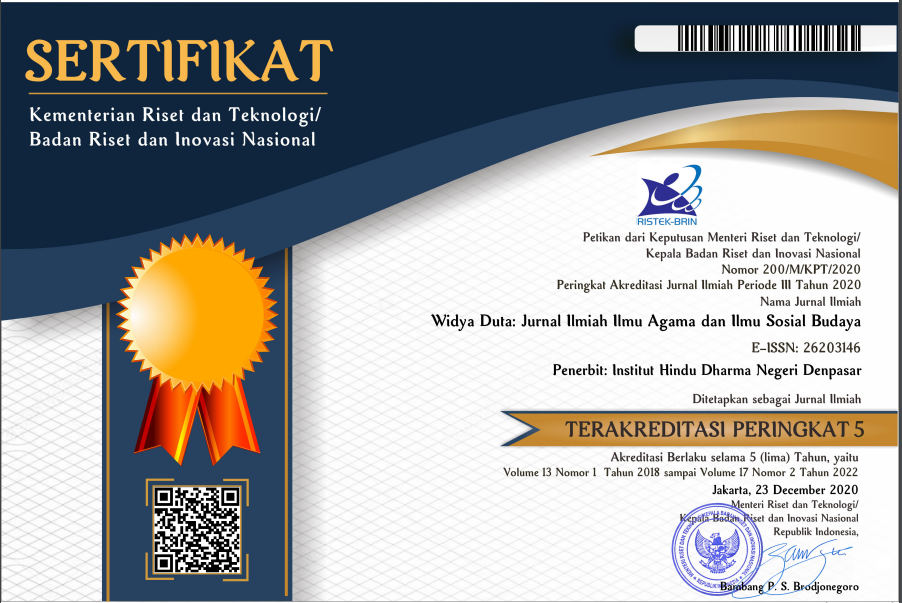DYNAMICS OF ANGKUL-ANGKUL SAKA JAJAR DEVELOPMENT IN SUSUT DISTRICT, BANGLI REGENCY
DOI:
https://doi.org/10.25078/wd.v18i1.2382Keywords:
Dynamics, Angkul-Angkul, Saka JajarAbstract
The Balinese Hindu community is known as a traditional society, where traditional society is a society that in its daily life still applies ancient systems or old customs in various settings of its life. Their lives have not been overly influenced by changes that come from outside their social environment. The life of traditional society still tends to uphold certain traditions that exist in society as a transformation of values that are considered appropriate. Traditional community culture is the result of adaptation to the surrounding natural and social environment without receiving outside influences (Ifzanul, 2010: 15). Balinese society as adherents of a traditional cultural system is formed from many complex elements, including religious systems, politics, customs, language, tools, clothing, buildings and works of art. Angkul-Angku Saka Jajar is one of the cultures of the people of Susut District, Bangli Regency where this building is part of the spatial layout of the community settlement which is also a sign of the social identity of the community. Where in general Angkul-Angkul Saka Jajar is a sacred building and it is agreed that it can only be built by a village leader called Mekel or Perbekel.
Oriented to this background, the following problems can be formulated: (1) How is the conception of the development of Angkul-Angkul Saka Jajar as a symbol of social identity for the Hindu community in Susut District, Bangli Regency?, (2) How is the implementation of the construction of Angkul-Angkul Saka Jajar as a symbol of identity? the Hindu community in Susut District, Bangli Regency?, (3) What values are contained in Angkul-Angkul Saka Jajar as a symbol of social identity for the Hindu community in Susut District, Bangli Regency?. In general, this study aims to reveal the meaning behind the existence of Angkul-Angkul Saka Jajar as a symbol of social identity for the Hindu community in Susut District, Bangli Regency. In this study using structural functional theory, meaning theory, and value theory. The source of the data in this study was the direct (primary) source obtained in the field as a result of observation and scrutiny of the existence of Angkul-Angkul Saka Jajar as a symbol of social identity for the Hindu community in Susut District, Bangli Regency. While indirect (secondary) sources can be obtained through books, articles, written documents, and so on from libraries or other places. Primary and secondary sources can be combined or cross-checked to obtain truly accurate and accountable data. The informants in this study were determined purposively. The data collection used here includes direct observation of the research object (observation), interviews, and literature studies. After the data is obtained, it is analyzed by reducing, then presenting the data, and drawing conclusions.





